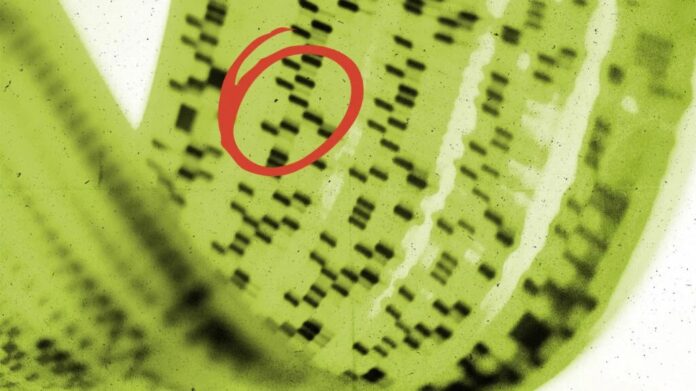
- Alzheimer’s disease is estimated to be the cause of dementia in 32 million people globally and currently has no cure.
- Most scientists believe Alzheimer’s disease occurs from changes in the brain caused by abnormal build-ups of amyloid and tau proteins.
- An international team of researchers has conducted a trial using a novel gene silencing therapy for Alzheimer’s disease aimed at lowering the amount of tau protein in the body.
Although scientists are still not completely sure what causes Alzheimer’s disease, the most popular theory is that it occurs when abnormal build-ups of two proteins —
While doctors can treat symptoms of Alzheimer’s disease to improve a person’s quality of life, there is still no cure for the dementia condition that is estimated to affect
Now an international team of researchers has conducted a trial using a new gene silencing therapy for Alzheimer’s disease.
The therapy silences the
This study was recently published in the journal
Tau is a protein most commonly found in neurons, the central cells of the nervous system. In a healthy brain, tau helps stabilize the tube-like internal structure of nerve cells.
These tube-like structures — known as
In a brain with Alzheimer’s disease, the tau protein detaches from the microtubules and instead attaches to other tau proteins within the brain cell. This causes abnormal build-ups of tau protein and the microtubules to collapse.
These build-ups of tau protein join to form “tangles” within the brain cells. When that happens, the neurons are no longer able to communicate with each other.
“We know that tau tangles track with [the] progression of Alzheimer’s, meaning the worse that Alzheimer’s gets, the more tau tangles there are throughout more and more of the brain,” Dr. David Merrill, an adult and geriatric psychiatrist and director of the Pacific Neuroscience Institute’s Pacific Brain Health Center at Providence Saint John’s Health Center in Santa Monica, CA, not involved in this research, told Medical News Today.
“And those ultimately cause neurons to dysfunction and die,” he explained.
In this study, the researchers created a drug aimed at silencing the gene that encodes the tau protein. That gene is the
The experimental drug, called BIIB080, is an
In this phase 1
The trial compared four doses of the experimental drug administered through an injection into the nervous system via the
At the conclusion of the study, researchers found that study participants in the treatment groups that received the highest dose of the drug had a greater than 50% reduction in levels of both
Researchers reported mild or moderate side effects in 94% of participants who received the drug and 75% of the participants who received placebo, with over 90% completing the post-treatment period. Headaches after injection of the experimental drug were the most common side effect.
When asked about this study, Dr. Merrill told MNT it was “amazing” that the investigators were able to silence the expression of the gene that creates tau tangles in the Alzheimer’s brain.
“This is the first step in showing that this is a safe approach that has a plausible biologic mechanism that can then be tested to see if it indeed does what we would expect, which is slow down the progression of Alzheimer’s and be a disease-modifying therapy that results in people’s cognition being better for longer.”
– Dr. David Merrill
Dr. Raphi Wald, a board-certified neuropsychologist at the Marcus Neuroscience Institute, established at Boca Raton Regional Hospital, part of Baptist Health South Florida, not involved in this research, commented that this was a positive step in the right direction.
“A great deal of research is now being conducted on preventing or destroying the abnormal proteins that appear on the brains of people with Alzheimer’s disease and this adds a new approach to that research,” he told MNT.
“The brains of people with Alzheimer’s disease tend to show higher levels of two proteins, tau, and amyloid, than people without Alzheimer’s. Alzheimer’s research has focused to a large extent on controlling the spread of these pathologies in the brain. This research is proposing what could be an effective method of doing so,” he noted.
MNT also spoke with Dr. Claire Sexton, senior director of scientific programs and outreach at the Alzheimer’s Association, about this study.
“While
When it comes to the next steps in this research, Dr. Wald said what is most important with these treatments is how it affects the everyday lives of people predisposed to or living with Alzheimer’s.
“Reducing tau is not a guarantee that people will not go on to have worsening cognitive functioning,” he cautioned.
Dr. Merrill said the natural progression would be a phase 2 trial for safety and tolerability in terms of side effects.
“And then the definitive phase 3 trial would be to really look at treatment efficacy,” he continued. “Does memory improve? Does worsening of memory slow down in patients with Alzheimer’s disease over time? I’d love to see this drug studied in later-stage clinical trials to see whether or not it helps memory performance or preserve memory performance in Alzheimer’s.”
Dr. Sexton pointed out that, as all study participants were white, more research including diverse populations will be needed to fully examine the safety, target engagement, and clinical benefit in all populations.
“However, given the role of tau in not only Alzheimer’s but other dementias — known as
“The Alzheimer’s Association Part the Cloud research funding program is invested in therapeutic research targeting tau, including a project by Dr. Ross Paterson at University College London. His work is investigating a novel compound aimed to reduce dementia-related tau production in individuals with Alzheimer’s,” said Dr. Sexton.
Hits: 0










